#Public Geocoding APIs
Explore tagged Tumblr posts
Text
Google APIs: Powering Innovation Across the Web
In a world driven by data, seamless integrations, and intelligent services, Google APIs have become a go-to solution for developers. Whether you’re building a mobile app, a web tool, or an enterprise platform, Google’s APIs offer a reliable way to tap into the power of services like Maps, YouTube, Gmail, and Google Cloud.
What Are Google APIs?

Google APIs are tools and services offered by Google that allow developers to interact with Google’s platforms and use their functionalities within their own applications. These APIs cover everything from location tracking to machine learning and cloud services.
Popular Google APIs include:
Maps API — Embed maps and location features.
YouTube API — Manage videos and channels.
Drive API — Access and manage Google Drive files.
Translate API — Translate text between languages.
Cloud Vision API — Analyze image content.
Firebase APIs — Power real-time apps with backend services.
Why Use Google APIs?
Access Rich Data: Leverage real-time and historical data from Google.
Build Smarter Apps: Integrate AI, translation, and location features effortlessly.
Cross-Platform Support: Use on web, mobile, and desktop.
Scalable & Reliable: Backed by Google’s infrastructure.
Free Tiers Available: Many APIs offer generous free quotas for developers.
Common Categories of Google APIs
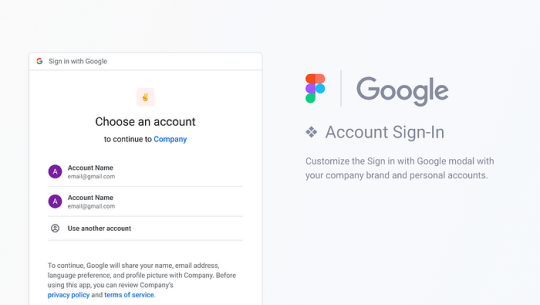
Maps & Location
Maps JavaScript API
Geocoding & Places API
Distance Matrix API
Media & YouTube
YouTube Data API
YouTube Analytics API
Productivity & Communication
Gmail API
Google Calendar API
Drive, Docs & Sheets APIs
Machine Learning
Vision API — Detect objects, faces, text.
Natural Language API — Understand text meaning.
Translation API — Instant language translation.
Speech APIs — Convert between speech and text.
Firebase APIs
Authentication, Firestore, Realtime Database, Cloud Messaging, and more.
How to Use a Google API
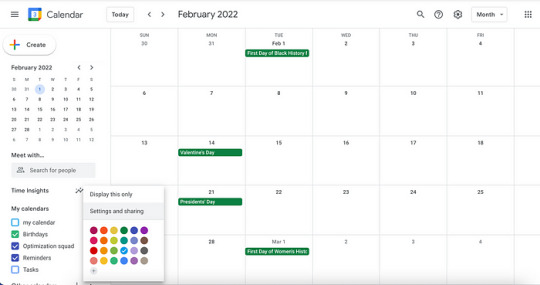
Create a Project in Google Cloud Console.
Enable the API you want (e.g., Maps, YouTube, etc.).
Generate Credentials (API key, OAuth client ID, or Service Account).
Install a Client Library or use direct REST calls.
Start Building your application using the API.
Discover the Full Guide Now
Authentication Methods
API Key: For simple apps that don’t access personal user data.
OAuth 2.0: Needed for accessing user-specific services like Gmail or Drive.
Service Account: For server-to-server interactions.
Real-World Use Cases
Ride-Sharing: Maps + Distance Matrix APIs.
E-commerce: Vision API for image recognition, Sheets API for inventory.
Education Apps: Drive & Classroom APIs for file management.
AI Chatbots: Natural Language + Speech APIs.
Costs & Quotas
Most Google APIs have free monthly usage quotas. Examples:
Maps API: 28,000 free map loads/month.
Vision API: 1,000 units/month free.
Translate API: 500K characters/month free.
Monitor usage in your Google Cloud Console and set billing alerts to avoid surprises.
Best Practices

Secure your API keys — don’t expose them in public code.
Use caching to reduce repeated API calls.
Read the official documentation thoroughly.
Handle errors and rate limits gracefully in your app.
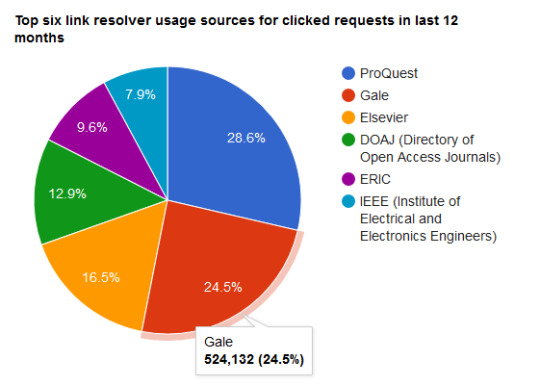
Google APIs are powerful tools that help developers build feature-rich, scalable, and intelligent applications. Whether you’re building for web, mobile, or enterprise, there’s likely a Google API that can speed up development and improve user experience.
So if you’re planning to add maps, manage content, automate workflows, or introduce AI to your app — Google APIs have got you covered.
Helpful Links:
Google API Librar
Google API Doc
API Pricing
0 notes
Text
Step-by-Step Guide to Address Validation Integration in Salesforce
In today’s data-driven world, maintaining accurate customer information is crucial for businesses of all sizes. One critical component of customer data is the address, which plays a vital role in various processes, from shipping to customer communication. Address validation ensures that the addresses entered into your systems are accurate, complete, and deliverable, thereby reducing errors and improving customer satisfaction. If you’re using Salesforce, integrating address validation can streamline your operations significantly. This guide provides a comprehensive, step-by-step approach to integrating address validation into your Salesforce environment.

What is Address Validation?
Address validation is the process of verifying the accuracy and completeness of addresses entered into a database. This process includes checking the format of the address, confirming that the address exists, and ensuring that it is deliverable. By integrating address validation into Salesforce, businesses can improve data quality, enhance customer service, and reduce costs associated with undeliverable mail or incorrect shipments.
Why Integrate Address Validation in Salesforce?
Improved Data Accuracy: Validating addresses helps eliminate typos and inaccuracies, leading to a cleaner database.
Enhanced Customer Experience: Customers receive their orders on time when addresses are accurate.
Cost Savings: Reduces costs associated with returned shipments and wasted marketing efforts.
Streamlined Operations: Automation of address verification processes saves time and resources for Salesforce users.
Step 1: Choose an Address Validation API
Before integrating address validation into Salesforce, you need to select an appropriate address validation API. Some popular options include:
Google Maps API: Offers comprehensive address validation and geocoding services.
Loqate: Specializes in address verification and geocoding with global coverage.
SmartyStreets: Provides address validation services specifically designed for the U.S. and international addresses.
When choosing an API, consider factors such as pricing, ease of integration, and the level of accuracy offered.
Step 2: Set Up Your Salesforce Environment
Log in to Salesforce: Access your Salesforce account with administrator credentials.
Navigate to Setup: Click on the gear icon in the top right corner and select "Setup."
Create a New Connected App:
In the Quick Find box, type "App Manager" and select it.
Click on "New Connected App" to create a new application for the API integration.
Fill in the required fields like the name and email. Under the "API (Enable OAuth Settings)" section, check the box to enable OAuth settings.
Set the callback URL (this can be any URL for testing, such as https://localhost).
Select the OAuth scopes needed for the integration, such as Full access and Perform requests on your behalf at any time.
Save the Connected App: After saving, make a note of the Consumer Key and Consumer Secret generated by Salesforce, as you will need these for API authentication.
Step 3: Obtain API Credentials
After setting up the connected app, obtain the necessary API credentials from your chosen address validation service. This typically includes:
API Key: A unique identifier for your application.
Endpoint URL: The URL used to make requests to the address validation service.
Refer to the documentation of your chosen API for specific instructions on obtaining these credentials.
Step 4: Create Apex Class for Address Validation
In Salesforce, you will need to create an Apex class to handle the integration with the address validation API. Follow these steps:
Go to Developer Console:
In Salesforce, click on your avatar in the top right corner, then select "Developer Console."
Create a New Apex Class:
Click on "File" > "New" > "Apex Class."
Name your class (e.g., AddressValidationService) and click "OK."
Write the Apex Code:
public class AddressValidationService { private static final String API_URL = 'https://api.example.com/validate'; // Replace with your API endpoint private static final String API_KEY = 'YOUR_API_KEY'; // Replace with your API keypublic static Map<String, Object> validateAddress(String address) { Http http = new Http(); HttpRequest request = new HttpRequest(); request.setEndpoint(API_URL + '?address=' + EncodingUtil.urlEncode(address, 'UTF-8')); request.setMethod('GET'); request.setHeader('Authorization', 'Bearer ' + API_KEY); HttpResponse response = http.send(request); if (response.getStatusCode() == 200) { return (Map<String, Object>) JSON.deserializeUntyped(response.getBody()); } else { throw new AddressValidationException('Failed to validate address: ' + response.getBody()); } }
}
public class AddressValidationException extends Exception {}
Step 5: Create a Custom Field in Salesforce
Next, create a custom field in your Salesforce object (e.g., Lead, Contact, or Account) to store the validated address information.
Navigate to Object Manager:
In the Setup menu, click on "Object Manager" and select the object where you want to add the field.
Add a New Field:
Click on "Fields & Relationships" > "New."
Choose the appropriate field type (e.g., Text) and click "Next."
Fill in the details (label, name, etc.) and click "Next," then "Save."
youtube
SITES WE SUPPORT
Bank Insurance Template– Wix
1 note
·
View note
Text
Different Address Autocomplete APIs
Address autocomplete APIs are integral to enhancing user experience and ensuring data accuracy by predicting and suggesting addresses as users type. These APIs streamline the process of entering addresses, reduce keystroke errors, and improve data quality. Various providers offer address autocomplete APIs, each with unique features and benefits. Here, we delve into some of the most prominent address autocomplete APIs, examining their functionalities, advantages, and use cases.

Google Places API
The Google Places API is one of the most popular address autocomplete services. It leverages Google’s extensive database of locations to provide accurate and comprehensive address suggestions.
Features:
Global Coverage: Offers extensive coverage with data from over 200 countries.
Rich Data: Provides detailed information, including place names, addresses, phone numbers, and user reviews.
Customizable: Allows customization of suggestions based on user-defined geographic areas or types of places.
Real-time Updates: Ensures that data is up-to-date by frequently updating its database.
Advantages:
High Accuracy: Google’s vast data ensures high accuracy in address suggestions.
Easy Integration: Comprehensive documentation and support make integration straightforward.
Scalability: Can handle large volumes of requests efficiently.
Use Cases:
E-commerce: Simplifies address entry during checkout to reduce cart abandonment.
Travel Apps: Helps users find and book hotels, restaurants, and attractions.
Here Places API
Here Places API is another robust option for address autocomplete, known for its precise mapping and location data.
Features:
Comprehensive Coverage: Offers global coverage with detailed location data.
Category Search: Allows searches based on categories, such as restaurants, hospitals, and schools.
Flexible Responses: Provides structured data including address components, latitude, and longitude.
Customizable Autosuggestions: Tailors suggestions based on geographic constraints and user context.
Advantages:
High Precision: Provides precise location data, especially useful for navigation and mapping applications.
Rich Contextual Data: Offers additional contextual information about locations, enhancing user experience.
Robust Security: Ensures data security with encrypted transactions.
Use Cases:
Logistics: Enhances route planning and delivery accuracy.
Real Estate: Helps users find properties with detailed address information.
Bing Maps API
Microsoft’s Bing Maps API is another powerful tool for address autocomplete, leveraging Microsoft’s mapping technology.
Features:
Global Reach: Provides address data from around the world.
Detailed Information: Offers detailed information about places, including coordinates and address components.
Customizable Filters: Allows developers to customize suggestions based on regions or types of businesses.
Batch Geocoding: Supports batch processing for large datasets.
Advantages:
Integration with Microsoft Ecosystem: Seamlessly integrates with other Microsoft services and platforms.
Reliable and Scalable: Designed to handle high volumes of requests reliably.
Advanced Analytics: Provides advanced analytical tools for data insights.
Use Cases:
Enterprise Solutions: Integrates well with enterprise applications, enhancing CRM and ERP systems.
Government Services: Used in public sector applications for efficient address management.
TomTom Search API
TomTom, known for its navigation products, offers the TomTom Search API for address autocomplete, providing reliable location data.
Features:
Global Coverage: Extensive global address data with frequent updates.
Accurate Geocoding: Offers high accuracy in converting addresses to geographic coordinates.
Contextual Suggestions: Provides suggestions based on user input and context.
Multi-language Support: Supports multiple languages, enhancing usability for global applications.
Advantages:
Trusted Navigation Data: Leverages TomTom’s expertise in navigation for accurate address suggestions.
User-friendly: Easy to implement with comprehensive documentation.
Scalability: Capable of handling large-scale applications.
Use Cases:
Navigation Apps: Ideal for applications requiring precise routing and navigation.
Telematics: Enhances vehicle tracking and fleet management systems.
SmartyStreets API
SmartyStreets API specializes in address validation and autocomplete, known for its high accuracy and reliability.
Features:
U.S. Focused: Primarily focused on U.S. addresses with extensive and accurate data.
Address Validation: Validates and standardizes addresses in real-time.
Geocoding: Provides precise latitude and longitude coordinates.
Bulk Processing: Supports bulk address verification and geocoding.
Advantages:
High Accuracy: Ensures addresses are validated and standardized to meet postal requirements.
Real-time Processing: Offers real-time address validation and autocomplete.
Data Quality: High-quality data reduces errors and improves delivery rates.
Use Cases:
E-commerce and Retail: Enhances the checkout process with accurate address entry.
Financial Services: Ensures compliance and reduces fraud by validating addresses.
Loqate API
Loqate API offers comprehensive address verification and autocomplete services with global coverage.
Features:
Global Database: Extensive global address data, frequently updated.
Multi-language Support: Supports numerous languages for international applications.
Data Enrichment: Provides additional context, such as demographic and geographic data.
Flexible Integration: Easily integrates with various platforms and applications.
Advantages:
Global Reach: Ideal for businesses with international customer bases.
Data Enrichment: Enhances address data with additional insights.
High Reliability: Consistent and reliable performance.
Use Cases:
Multinational Corporations: Manages global customer addresses efficiently.
Marketing Campaigns: Improves the accuracy of direct mail campaigns.
Conclusion
Address autocomplete APIs are essential tools for businesses aiming to enhance user experience, improve data accuracy, and streamline operations. Each API offers unique features and advantages, catering to different needs and use cases. Google Places API excels in broad coverage and ease of use, while Here Places API and Bing Maps API offer precise data and robust integration capabilities. TomTom Search API provides trusted navigation data, SmartyStreets API focuses on U.S. address validation, and Loqate API offers comprehensive global data with enrichment capabilities. By understanding the strengths and applications of each API, businesses can select the most suitable tool to meet their specific requirements and achieve operational excellence.
youtube
SITES WE SUPPORT
Address Verification & Autocomplete – Wordpress
SOCIAL LINKS
Facebook
Twitter
LinkedIn
Instagram
Pinterest
0 notes
Text
Alternatives For Geocoding API
Many applications can benefit from map data, but different users have unique needs and requirements. Some may need to convert addresses into geographic coordinates (geocoding); others may want to create and display maps; still others will require routing and directions, including public transport routes. Some may also wish to use geofencing to define virtual boundaries around specific locations and trigger actions when a user enters or exits them.
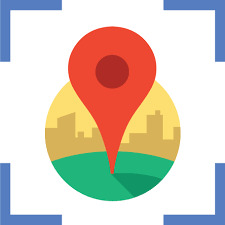
A popular free alternative to Geocoding API is OpenStreetMap, a community of cartographers, humanitarians, software engineers, and others contributing information about points of interest all over the world. While the free version offers plenty of features, its accuracy is limited by its contributors' willingness to update and improve the data. Its licensing requirements can also be restrictive.
If you're looking for a more reliable mapping solution, you might consider paying for a map API. These services typically cost a fraction of the price of Google's and offer more flexible policies.
For example, the MapTiler API can be tightly integrated or customized with your brand colors; its vector tiles are compatible with Leaflet and the open-source Mapbox SDKs. Moreover, it's up to 80% less expensive than Google Maps and supports multi-language support. Another option is the GraphHopper API, which offers detailed worldwide maps as well as geocoding and address validation services. Moreover, it provides routing and route optimization services. However, it limits free usage to 250 requests per day.
youtube
SITES WE SUPPORT
Print & Mail Geocodes– Wix
0 notes
Text
Reverse Address Lookup API
The best reverse address lookup api should verify information against a variety of sources and provide results quickly. This includes public records, phone books, real estate records, magazine subscriptions, voter registration and proprietary data. It should also be able to validate addresses and prevent them from being duplicated. Additionally, it should only charge you when you get results and offer a flexible pricing model. Finally, it should provide accurate, up-to-date data. Inaccurate or outdated information can lead to costly errors in customer engagement.

A reverse address lookup can also be used to find out who lives at a location or owns a property. This can be useful for business or personal reasons. For example, if you're buying a home or property, a reverse address lookup can give you a list of former residents and associated phone numbers.
Reverse address lookups use latitude and longitude coordinates to find a human-readable address. This is known as geocoding.
A search operation requires a latitude and longitude in WGS format, a search query in JSON or XML, a format (json or xml), and a key that identifies your application for purposes of quota management. The format is used to determine what data will be returned from the search and the indexes that are included in the search.
A search can return a list of results or an error message if no results are found. The result set contains an array of address_components, which is a map of all the components that are present in the address. The types[] array identifies the type of each component. The types may include street_address, route, intersection, city, or political entity.
youtube
SITES WE SUPPORT
Finance Mail Api – Blogger
0 notes
Text
Reverse Address Lookup API
The reverse address lookup api is a geocoding service that takes a point on the map and converts it into a human-readable address. This service can be used for verification purposes or to vet new neighbors. It can also help you determine property ownership, sales history, and neighborhood information. The best reverse address lookup api providers provide accurate, reliable results. Their software curates official postal authority, mapping, and geospatial data sets to ensure consistent and comprehensive global coverage.

A reverse address lookup can be a useful tool for your business. It can help you verify addresses, which can improve logistics and delivery operations. It can also help you optimize routes and reduce costs, while ensuring customer satisfaction. Moreover, the right address verification solution can help you build a reliable database of addresses that are easy to match and use.
To get a complete, human-readable address from a point on the map, enter the following parameters: latlng -- the two coordinates that define a location, e.g., street address, city, state, and zip code
PeopleLooker is a popular reverse address search service that provides detailed property information for almost any US-based address. The company's services are well-reviewed for their clean, user-friendly interface and comprehensive search results. In addition, the company's team of experts double-checks all results to ensure accuracy and reliability. Lastly, it offers multiple pricing options to suit the needs of different users. Intelius is another provider of an online address lookup tool that uses a wide range of public and private databases to provide accurate, up-to-date information. The site is FCRA-accredited and has an excellent reputation for its person and address search services.
youtube
SITES WE SUPPORT
Lookup Mail Apis – Blogger
0 notes
Text
AWS Address Lookup API and Lambda Functions
The files are in CSV format and the metadata is in plain text. The file list is organized by manuscript and contains a row per manuscript with a number of fields. Each manuscript has an ETag, which represents a unique version of the manuscript. The ETag is a 64-bit integer value that is computed from the contents of an object.
AWS provides multiple ways to expose your services publicly, including EC2 instances with public access and the more common use of Elastic IPs for load balancers. Exposing these services can allow attackers to run port scans to identify weaknesses in your infrastructure and target attacks based on identified vulnerabilities.
This blog post shows how to leverage AWS API Gateway and Lambda functions to perform address validation using Amazon Location Service Places. The service offers point-of-interest search functionality, and can convert a text string into geographic coordinates (geocoding) or reverse geocode a coordinate into a street address (reverse geocoding). The service also provides data storage options for your results.
To start, create an HTTP API in the AWS API Gateway console by selecting “API Gateway” in the Function Configuration form’s dropdown and choosing “Create a new API”. Once the API is created, select it in the console’s details page and open the Function Designer to set up connections for the Lambda function. These connections take the form of triggers -- various AWS services that can invoke your Lambda -- and destinations -- other AWS services that can route your lambda’s return values.
youtube
"
SITES WE SUPPORT
Address lookup API– Blogspot
SOCIAL LINKS
Facebook Twitter LinkedIn Instagram Pinterest
"
1 note
·
View note
Text
Address Verification Software for Mailing
When you are working with a large volume of addresses, large volume address verification software is an invaluable tool that can save you time and money. Rather than manually reviewing each address for spelling, format, and duplicates, this solution compares the information to an authoritative database and flags and corrects errors. This helps ensure that the address is valid and that it can be delivered.

When looking for an address verification solution, it is important to consider the type of address data you want to verify and how often you need to do so. This will determine the level of accuracy and speed you need from your solution. Some tools will provide real-time results, while others will validate the data on a regular basis and update it in your database.
Xverify is an example of an address verification tool that works in real-time and can identify minor errors such as mispellings or missing digits. The service also provides a number of other features such as geocoding, which converts an address into latitude and longitude coordinates for use in mapping and customer tracking.
Another option is Melissa, which uses a vast global address database to standardize, correct, and search U.S. and global addresses in more than 240 countries. This solution also offers an API that can be used for automated batch file processing, address autocomplete, and more.
SmartyStreets (formerly known as SmartyData) is an example of address verification software that starts with the official USPS database and adds to it with multiple other authoritative public and private sources. The result is a bankable service that can verify address data at the individual, bulk, and list levels, as well as perform standardization, correct spelling and formatting, and return 45 metadata points per entry.
youtube
SITES WE SUPPORT
Mail Documents Api – Blogger
1 note
·
View note
Text
Reverse Address Lookup API
Reverse address lookup api offers numerous benefits for businesses. For example, if you are looking to hire a new employee or want to vet potential neighbors for safety reasons, reverse address lookup can help verify their identity and address information. It can also provide details such as known relatives and professional affiliations.
When searching for an address, it is important to be aware of how the information is stored and where it comes from. Many free services use public records to source their data, which can be inaccurate and outdated. This is why it’s important to find a service that verifies information against a variety of sources. Some services even verify against social media sites.

The best reverse address lookup api should have a global data set that curates reference data from various sources and formats into a unified, reliable single-best-record. This will ensure businesses have the best possible accuracy in their address verification efforts. It should also support multiple languages, so it’s suitable for companies worldwide.
Reverse geocoding is the process of translating a human-readable address into its location on a map. The API query for this is GET request with the following options:
Latitude and longitude coordinates of the search location.
Whether the search results should return rooftop geocodes.
If not returning rooftop geocodes, the search should return results based on a prioritized hierarchy of feature types:
In order to verify an address, the API needs to know if the address is a street, building number, or POI. It should also understand the format in which the address is written and be able to identify it when it is written differently than expected.
youtube
SITES WE SUPPORT
Verify Lookup Api – Blogger
0 notes
Text
What is an Address Verification API?
An address verification API is an application programming interface that can confirm whether an address is correct, complete, and exists by comparing it with third party reference data. It can also identify errors and inconsistencies in addresses that have been entered into a system. This information is used for various purposes including improving customer experience, reducing returned mail, and minimizing fraud.

For example, an address verification solution can help e-commerce platforms avoid losing customers due to incorrect shipping address information. It can also improve customer satisfaction by ensuring packages are delivered on time and to the right person. Additionally, it can help financial institutions improve KYC processes by providing an upstream identity signal. Address verification services are often used by P2P marketplaces and dating and social media apps to help ensure that users provide accurate address data.
A good address verification API is a valuable tool for developers, but it’s important to understand the different capabilities of these types of solutions. Many offer validation and standardization functionality, but they can vary in their level of accuracy and coverage. Some are based on databases that are limited in scope and can lack up-to-date coverage. Others are more sophisticated in their approach, using machine learning algorithms to recognize and correct common errors and inconsistencies.
For example, Incognia’s address verification API is based on the United States Postal Service’s Coding Accuracy Support System (CASS) and adheres to USPS Publication 28 standards for domestic addresses. It also utilizes geocoding and Place ID, which helps developers get more contextual information about an address and its location. It can also distinguish between residential and business addresses and return valuable metadata, including the accuracy level and Plus Code for each address component.
youtube
SITES WE SUPPORT
Print Address With API – Wix
1 note
·
View note
Text
Public Geocoding APIs
★adresse.data.gouv.fr - Address database of France, geocoding and reverse ★Battuta - A (country/region/city) in-cascade location API ★Bing Maps - Create/customize digital maps based on Bing Maps data ★bng2latlong - Convert a British OSGB36 easting and northing (British National Grid) to WGS84 latitude and longitude ★City Context - Crime, school and transportation data for US cities ★CitySDK - Open APIs for select European cities ★Daum Maps - Daum Maps provide multiple APIs for Korean maps ★GeoApi - French geographical data ★Geocod.io - Address geocoding / reverse geocoding in bulk ★Geocode.xyz - Provides worldwide forward/reverse geocoding, batch geocoding and geoparsing ★GeoJS - IP geolocation with ChatOps integration ★GeoNames - Place names and other geographical data ★geoPlugin - IP geolocation and currency conversion ★Google Earth Engine - A cloud-based platform for planetary-scale environmental data analysis ★Google Maps - Create/customize digital maps based on Google Maps data ★GraphLoc - Free GraphQL IP Geolocation API ★HelloSalut - Get hello translation following user language ★HERE Maps - Create/customize digital maps based on HERE Maps data ★Indian Cities - Get all Indian cities in a clean JSON Format ★IP 2 Country - Map an IP to a country ★IP Address Details - Find geolocation with ip address ★IP Api - Find location with ip address ★IP Location - Find IP address location information ★IP Sidekick - Geolocation API that returns extra information about an IP address ★IP Vigilante - Free IP Geolocation API ★IPGeolocationAPI.com - Locate your visitors by IP with country details ★IPInfoDB - Free Geolocation tools and APIs for country, region, city and time zone lookup by IP address ★ipstack - Locate and identify website visitors by IP address ★Kwelo Network - Locate and get detailed information on IP address ★LocationIQ - Provides forward/reverse geocoding and batch geocoding ★Mapbox - Create/customize beautiful digital maps ★Mexico - Mexico RESTful zip codes API ★One Map, Singapore - Singapore Land Authority REST API services for Singapore addresses ★OnWater - Determine if a lat/lon is on water or land ★OpenCage - Forward and reverse geocoding using open data ★OpenStreetMap - Navigation, geolocation and geographical data ★PostcodeData.nl - Provide geolocation data based on postcode for Dutch addresses ★Postcodes.io - Postcode lookup & Geolocation for the UK ★REST - Countries Get information about countries via a RESTful API ★Uebermaps - Discover and share maps with friends ★Utah AGRC - Utah Web API for geocoding Utah addresses ★ViaCep - Brazil RESTful zip codes API ★Zipcodeapi - Find out possible zip codes for a city, distance between zip codes etc ★Zippopotam - Get information about place such as country, city, state, etc
0 notes
Text
The Best Address Verification Software
Address verification software helps organizations clean and standardize customer address data as a physical identifier. Companies that use address verification tools to validate addresses can save money on returned or undeliverable mail, improve the accuracy of mailing and shipping operations, reduce fraud by identifying duplicate records, and provide a better user experience for their customers. There are many address validation tools available in the market, but not all are created equal. This article compares the best address verification software and helps businesses choose the right solution for their needs.
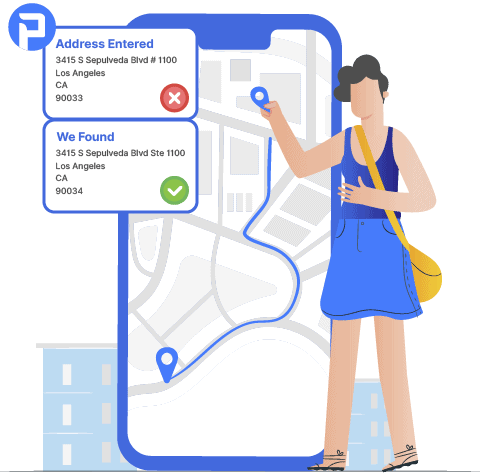
To verify an address, the software compares inputted information to a database of valid addresses. These databases can be maintained by public organizations, like the postal service or government agency, or by private businesses. A good address verification solution will have a large number of addresses in its database and can provide users with additional information, such as whether an area is served by a specific shipping carrier or is a high-risk area for fraud.
Some of the best address validation tools come with an API for automated processing, and some have other features, such as geocoding, which provides accurate latitude and longitude coordinates for a given address. Some of these solutions also offer support for multiple languages and character scripts, and can merge and manage huge datasets with ease. Other tools can identify aliases or other spellings of names, and can make corrections to ensure that the address is complete and correct.
youtube
SITES WE SUPPORT
Address Letter API – Wix
0 notes
Text
Geocoding And Its Requirements
Geocoding is the process of converting a textual description of a place into x, y coordinates. This can be done in a few different ways. Usually, this involves creating a map book of locations.

The map book will contain a set of address parsing rules that will allow you to identify the location of a specific address. In the real world, this is often a street address or even a building name.
A more elaborate version of this type of geocoding is based on an address locator. This is a computer program that will map an address in an interactive manner. There are several styles of address locator and each will have their own set of requirements.
Choosing the best one for your business depends on your needs. For example, a company that is trying to find the perfect location for a public building would want a geocoding service that is able to find the best point on a map. If the company needs a more comprehensive list of locations, it may be wise to consider a map database that is based on other reference systems.
Similarly, a business may need to use geocoding technology to identify the locations of customers. It is a valuable tool that helps companies improve their sales and shipping performance.
Although there are many advantages to geocoding, it is not always the easiest process. It requires a certain level of accuracy and budget, though. Often, it is a necessary part of any successful marketing plan.
youtube
SITES WE SUPPORT
Geocode Mailing API – Wix
0 notes
Link
In this tutorial, we’re going to use Angular with HERE data, and display and interact with that geolocation data using Leaflet.
When it comes to development, I’m all about choosing the right tool for the job. While HERE offers a great interactive map component as part of its JavaScript SDK, there might be reasons to explore other interactive map rendering options. Take Leaflet for example. With Leaflet, you can provide your own tile layer while working with a very popular and easy to use open source library.
In a past tutorial, you’ll remember that I had demonstrated how to use Angular with HERE, but this time around we’re going to shake things up a bit. We’re going to use Angular with HERE data, but we’re going to display and interact with it using Leaflet.
To get a better idea of what we plan to accomplish, take a look at the following animated image:

We’re going to display an interactive map, geocode some addresses, and display those addresses on the map as markers using Leaflet, Angular, and the HERE RESTful API.
Starting With a New Angular Project and the Leaflet Dependencies
Before going forward, the assumption is that you have the Angular CLI installed and that you have a free HERE developer account. With these requirements met, go ahead and execute the following command:
ng new leaflet-project
The above command will create our new Angular project, but that project won’t be ready to use Leaflet. We have to first include the necessary JavaScript and CSS files.
Open the project’s src/index.html file and make it look like the following:
<!doctype html>
<html lang="en">
<head>
<meta charset="utf-8">
<title>LeafletProject</title>
<base href="/">
<meta name="viewport" content="width=device-width, initial-scale=1">
<link rel="icon" type="image/x-icon" href="favicon.ico">
<link rel="stylesheet" href="https://unpkg.com/[email protected]/dist/leaflet.css">
</head>
<body>
<app-root></app-root>
<script src="https://unpkg.com/[email protected]/dist/leaflet.js"></script>
</body>
</html>
Notice that we’ve included the CSS library as well as the JavaScript library for Leaflet. Technically, this is all that is required to start using Leaflet with HERE in an Angular application. However, we’re going to do some more preparation work to set us up for some awesome features.
Open the project’s src/app/app.module.ts file and include the following:
import { BrowserModule } from '@angular/platform-browser';
import { NgModule } from '@angular/core';
import { HttpClientModule } from '@angular/common/http';
import { AppComponent } from './app.component';
@NgModule({
declarations: [
AppComponent
],
imports: [
BrowserModule,
HttpClientModule
],
providers: [],
bootstrap: [AppComponent]
})
export class AppModule { }
Because we are no longer using the HERE JavaScript SDK, we are now relying on HTTP requests to the RESTful API. By default, HTTP in Angular is disabled, so by including the HttpClientModule and adding it to the imports array of the @NgModule block, we are enabling it.
While not absolutely necessary, we could also clean up the CSS a bit to allow us a full-screen map. Open the project’s src/styles.css file and include the following:
body {
margin: 0;
}
Now everything will take up the full width and height without the default margins.
It may seem like we’ve done a lot as of now, but it has been strictly configuration. Now we’re going to get into the fun stuff, which is development with Leaflet and Angular.
Create an Angular Component to Represent an Interactive HERE Map
While there are many ways to start using maps in your project, the cleanest approach is to create a dedicated Angular component so the maps can be reused throughout the application.
From the Angular CLI, execute the following:
ng g component here-map
The above command will generate several files for us that will represent our component. We’re going to start by opening the project’s src/app/here-map/here-map.component.html file and including the following markup:
<div #map [style.height]="height" ></div>
In the above markup, you’ll notice the #map attribute. We’re going to use this as a reference so we can access this DOM element from our TypeScript code. You’ll also notice that we have a dynamic height and a static width. It is easy to full screen the width of a component, but you have to be a CSS wizard to full screen the height. To cheat, we’re going to use JavaScript to determine the height and set it as a variable after everything initializes.
With the HTML in place, open the project’s src/app/here-map/here-map.component.ts file and include the following:
import { Component, OnInit, ViewChild, ElementRef, Input } from '@angular/core';
import { HttpClient } from '@angular/common/http';
declare var L: any;
@Component({
selector: 'here-map',
templateUrl: './here-map.component.html',
styleUrls: ['./here-map.component.css']
})
export class HereMapComponent implements OnInit {
@ViewChild("map")
public mapElement: ElementRef;
@Input("appId")
public appId: string;
@Input("appCode")
public appCode: string;
private map: any;
public srcTiles: string;
public height: string;
public constructor(private http: HttpClient) {
this.height = window.innerHeight + "px";
}
public ngOnInit() {
this.srcTiles = "https://2.base.maps.api.here.com/maptile/2.1/maptile/newest/reduced.day/{z}/{x}/{y}/512/png8?app_id=" + this.appId + "&app_code=" + this.appCode + "&ppi=320";
}
public ngAfterViewInit() {
this.map = L.map(this.mapElement.nativeElement, {
center: [37.7397, -121.4252],
zoom: 10,
layers: [L.tileLayer(this.srcTiles)],
zoomControl: true
});
}
public dropMarker(address: string) {
this.http.get("https://geocoder.api.here.com/6.2/geocode.json", {
params: {
app_id: this.appId,
app_code: this.appCode,
searchtext: address
}
}).subscribe(result => {
let location = result.Response.View[0].Result[0].Location.DisplayPosition;
let marker = new L.Marker([location.Latitude, location.Longitude]);
marker.addTo(this.map);
});
}
}
This file and the above code is the bulk of our project. To make things easier to understand, we’re going to look at the above code piece by piece.
Within the HereMapComponent class, we have the following:
@ViewChild("map")
public mapElement: ElementRef;
@Input("appId")
public appId: string;
@Input("appCode")
public appCode: string;
The ViewChild is referencing our #map attribute from the HTML. This is how we’re getting a reference to the HTML component for further usage. Each of the @Input annotations represents a possible attribute that the user can provide. In our example, the user will be providing the app id and app code found in their developer dashboard.
Remember that dynamic height I was talking about. We’re setting it here:
public constructor(private http: HttpClient) {
this.height = window.innerHeight + "px";
}
We are calculating the inner browser height and setting it using JavaScript. This way we can avoid all the tricky vertical height stuff that comes with standard CSS.
Because we’re using Leaflet, we’re relying heavily on the various HERE RESTful APIs and this includes the Map Tile API.
public ngOnInit() {
this.srcTiles = "https://2.base.maps.api.here.com/maptile/2.1/maptile/newest/reduced.day/{z}/{x}/{y}/512/png8?app_id=" + this.appId + "&app_code=" + this.appCode + "&ppi=320";
}
Using the provided app id and app code we can construct our URL for getting tiles from the API. This is set in the ngAfterViewInit when we initialize Leaflet.
public ngAfterViewInit() {
this.map = L.map(this.mapElement.nativeElement, {
center: [37.7397, -121.4252],
zoom: 10,
layers: [L.tileLayer(this.srcTiles)],
zoomControl: true
});
}
When initializing Leaflet, we are using the HTML component that we referenced, are centering the map on certain coordinates, and are using our HERE Tile API for the layer.
While we won’t be working with markers and geocoding by default, we’re going to lay the foundation within our component:
public dropMarker(address: string) {
this.http.get("https://geocoder.api.here.com/6.2/geocode.json", {
params: {
app_id: this.appId,
app_code: this.appCode,
searchtext: address
}
}).subscribe(result => {
let location = result.Response.View[0].Result[0].Location.DisplayPosition;
let marker = new L.Marker([location.Latitude, location.Longitude]);
marker.addTo(this.map);
});
}
When the dropMarker method is executed, we make a request to the HERE Geocoder API with a search query. In our scenario, the search query is an address or location. The results are then used to create a marker which is added to the map.
Before we can start using our new component, we need to wire it up. Open the project’s src/app/app.module.ts file and include the following:
import { BrowserModule } from '@angular/platform-browser';
import { NgModule } from '@angular/core';
import { HttpClientModule } from '@angular/common/http';
import { AppComponent } from './app.component';
import { HereMapComponent } from './here-map/here-map.component';
@NgModule({
declarations: [
AppComponent,
HereMapComponent
],
imports: [
BrowserModule,
HttpClientModule
],
providers: [],
bootstrap: [AppComponent]
})
export class AppModule { }
Notice that this time around we have imported our component and added it to the declarations array of the @NgModule block.
The tough stuff is over and we can now work towards displaying our map.
Displaying and Interacting With the Angular Map Component
Since this is a simple project, we don’t have a router. Instead, everything will be rendered inside the project’s src/app/app.component.html file. Open this file and include the following:
<here-map #map appId="APP-ID-HERE" appCode="APP-CODE-HERE"></here-map>
There are a few things to take note of in the above. First, it is only coincidence that we’ve added a #mapattribute. We don’t truly need to add one and if we did, it doesn’t need to have the same name as the previous component. Second, notice the appId and appCode attributes. You’ll want to swap the placeholder values with your own tokens.
Now open the project’s src/app/app.component.ts file and include the following:
import { Component, OnInit, ElementRef, ViewChild } from '@angular/core';
@Component({
selector: 'app-root',
templateUrl: './app.component.html',
styleUrls: ['./app.component.css']
})
export class AppComponent implements OnInit {
@ViewChild("map")
public mapElement: ElementRef;
public ngOnInit() { }
public ngAfterViewInit() {
this.mapElement.dropMarker("tracy, ca");
this.mapElement.dropMarker("lathrop, ca");
}
}
We want to be able to make use of the dropMarker function that sits in our map component. To do this we need to gain a reference to our HTML component with the #map attribute. Once we have a reference, then we can start calling the public functions that reside in it.
In our example, we are adding two markers for two cities in California.
Conclusion
You just saw how to use Leaflet in your Angular project to work with HERE data. HERE is flexible so you’re able to use whatever renderer you want to display your interactive maps. In my previous tutorialwe used the default renderer, but this time we used Leaflet which is just one of many options.
1 note
·
View note
Text
Reverse Address Lookup API
The best reverse address lookup api should verify information against a variety of sources and provide results quickly. This includes public records, phone books, real estate records, magazine subscriptions, voter registration and proprietary data. It should also be able to validate addresses and prevent them from being duplicated. Additionally, it should only charge you when you get results and offer a flexible pricing model. Finally, it should provide accurate, up-to-date data. Inaccurate or outdated information can lead to costly errors in customer engagement.

A reverse address lookup can also be used to find out who lives at a location or owns a property. This can be useful for business or personal reasons. For example, if you're buying a home or property, a reverse address lookup can give you a list of former residents and associated phone numbers.
Reverse address lookups use latitude and longitude coordinates to find a human-readable address. This is known as geocoding.
A search operation requires a latitude and longitude in WGS format, a search query in JSON or XML, a format (json or xml), and a key that identifies your application for purposes of quota management. The format is used to determine what data will be returned from the search and the indexes that are included in the search.
A search can return a list of results or an error message if no results are found. The result set contains an array of address_components, which is a map of all the components that are present in the address. The types[] array identifies the type of each component. The types may include street_address, route, intersection, city, or political entity.
youtube
SITES WE SUPPORT
Finance Mail Api – Blogger
0 notes
Text
What Happens to All the Addresses That the Google Address Validation API Validates?
If you want to use Google Maps to find a location, you can use its address validation API. The API provides location details, including borders and time zones. It also provides directions to the location. However, these data are not guaranteed to be correct. Google's address validation API uses geocoding, a process that returns the coordinates of an address.

Google's address validation API is free for low-volume users, but companies that require high volumes of address verification may need to pay a premium. You will need to provide credit card details for each project that uses the service. The service is also global and available in several languages.
If you're building a business, using Google Maps address validation API can save you a lot of time and money. While Google Maps may be free to use, the terms of service are very restrictive. If you use the Google Maps API in a public application, it is important to remember that it won't be able to validate all the addresses you provide. For example, if you're building a home or office in an apartment building, you won't be able to use Google Maps' address validation API if the address isn't valid.
Address validation is a process for ensuring that postal addresses are valid. It can be performed upfront or by comparing addresses in a database. This process can also include data cleansing and address normalization.
youtube
SITES WE SUPPORT
Google Address Fill API – Wix
SOCIAL LINKS
Facebook Twitter LinkedIn Instagram Pinterest
0 notes